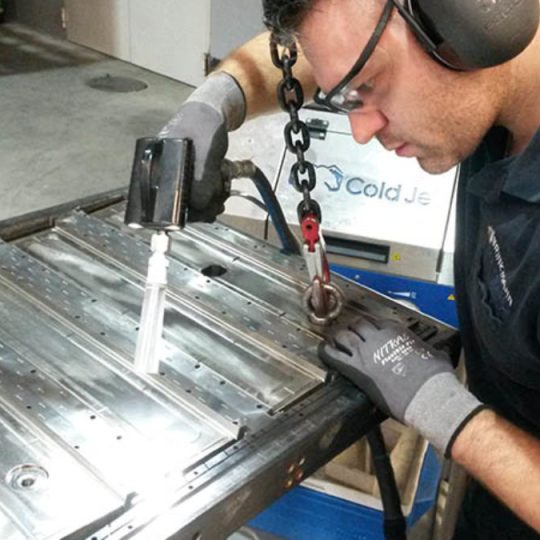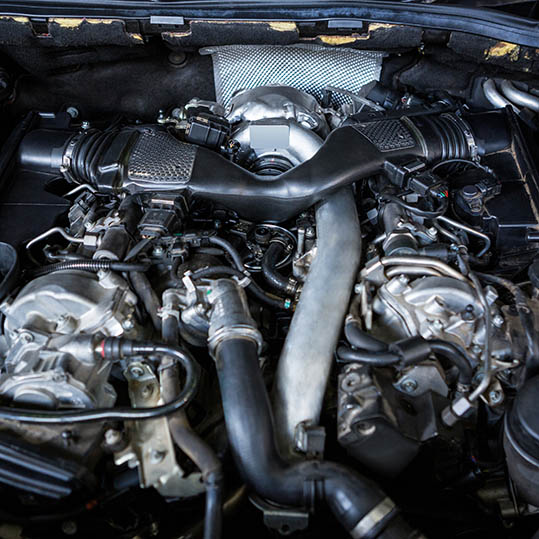Learn more about Dry Ice cleaning
What can we clean with Dry Ice Cleaning? Almost anything!
Dry Ice Blasting Explained
Dry Ice Blasting can clean almost any surface
Advantages of dry ice Cleaning
Dry ice blasting is a simple and effective way to clean parts without chemicals, abrasive materials, high temperatures, or steam. CO2 pellets are used as impact medium for removing surface contamination from parts with no damage to your equipment.
Byond Zero’s dry ice cleaning is perfect for cleaning all kinds of surfaces from brick, to stone, to metal. Check out the variety of surfaces we can successfully restore and get a quote today!
Metal
Try dry ice cleaning to gently uncover the underlying metal surface, restoring it back to a like-new condition.
Wood
Dry ice cleaning is a cost-effective, environmentally safe method to effectively remove years of dirt, mould, and wear from wood, helping to restore it to its natural state.
Paper
Dry Ice cleaning is safe enough to clean delicate object such as historical records printing on paper.
Electrical Components
Dry ice cleaning is safe around wires without disassembly or downtime. It removes dirt, grime and tar with great efficiency.
Concrete
Dry ice cleaning cleans concrete gently, leaving no residue behind. Our process is a great alternative to conventional concrete cleaning methods such as pressure washers and chemicals.
Antiques
Dry ice cleaning offer a gentle, non-toxic cleaning solution that is safe enough to use on antiques and historical artifacts.
Dry Ice Cleaning goes deep
Deep Cleaning
Reach areas that are hard to reach by traditional cleaning methods using pressurized streams of dry ice.
The planet will thank you
Environmentally Friendly
The dry ice used in dry ice blasting is pure carbon dioxide. Dry ice cleaning is chemical free and has no toxic chemicals.
A cleaning that does’t damage
Non-abrasive
Dry ice pellets don’t scratch like traditional methods.


We believe dry ice Cleaning is the best way to clean any surface without damage or chemicals
FAQ
Dry ice is a solid form of carbon dioxide (CO2) that is found naturally in the atmosphere. Unlike regular ice, dry ice will not melt in your hands. It exists between -80 degrees Celsius and -109 degrees Celsius.
Dry ice cleaning is a simple and effective way to clean parts without chemicals, abrasive materials, high temperatures, or steam. CO2 pellets are used as impact medium for removing surface contamination from parts with no damage to your equipment.
Why dry ice cleaning instead of a traditional methods?
Dry ice cleaning uses a blast media that sublimates (vaporizes) upon impact with the surface. All that remains is the contaminate you are removing, and since dry ice vaporizes on impact, the process can be used to clean complicated cavities where typical grit blast media will become trapped.
How does the extreme cold dry ice pellets help?
Dry ice cleaning offers a safe and effective method for surface cleaning and preparation. Unlike other blast media, dry ice has a temperature of -109°F (-78.3°C). Because of the temperature difference between the dry ice particles and the surface being treated, thermal shock occurs during the process of dry ice blasting. This causes a breakdown of the bond between two dissimilar materials. Gummy substances and adhesives are embrittled making them easier to remove
What happens to the contaminate?
Dry contaminants can be swept up or vacuumed, whereas a wet contaminant is removed by the force of the stream.
Will dry ice cleaning damage the surface?
Dry ice cleaning is often a cheaper alternative than other forms of media cleaning. The cleaning process has a fast turn around time and allows for less to no downtime. The nonabrasive results allow for extra steps to be eliminated, saving you money.
How exactly does dry ice cleaning work?
Dry ice cleaning has three factors contributing to its effectiveness: First, is thermal impact. At a temperature of -109ºF, dry ice causes thermal shock of the surface due to the difference in temperature. This causes the bond between the contaminant and the surface to break leaving a clean surface behind. Second, there is kinetic impact, as dry ice pellets bombard each other off of its surface. Third, as sublimation of dry ice takes place, it expands 800% propelling the contaminant off the substrate
Will dry ice blasting remove rust?
Dry ice cleaning will remove rust, surface rust, oxidation and salts (SP 6). The dry ice does not remove deeply adhered corrosion or pitted oxidation. Dry ice is simply not aggressive enough to create a profile or a white metal finish.
Is dry ice cleaning good for cars?
Yes! dry ice cleaning will clean the car’s surface as much as possible without causing damage to the exterior paint. In fact, it just requires one quick rinse after using dry ice blasting to wash away any residue and you’re ready to buff.
is dry ice cleaning better than sandblasting?
Dry ice cleaning is nonabrasive. This means it will not damage your surface during removal. Sandblasting can be a very abrasive method, which can cause damage to your surface while removing materials.

